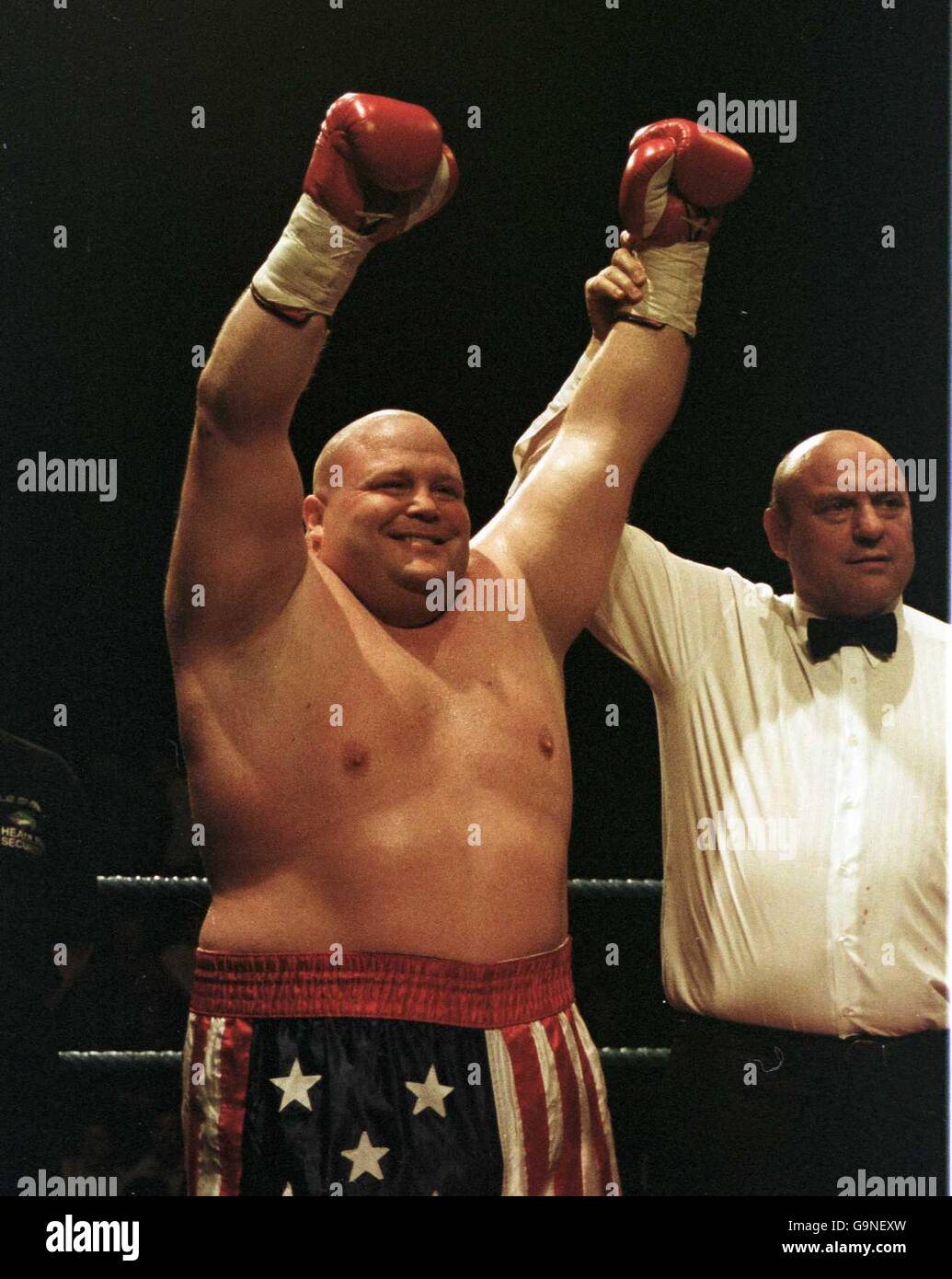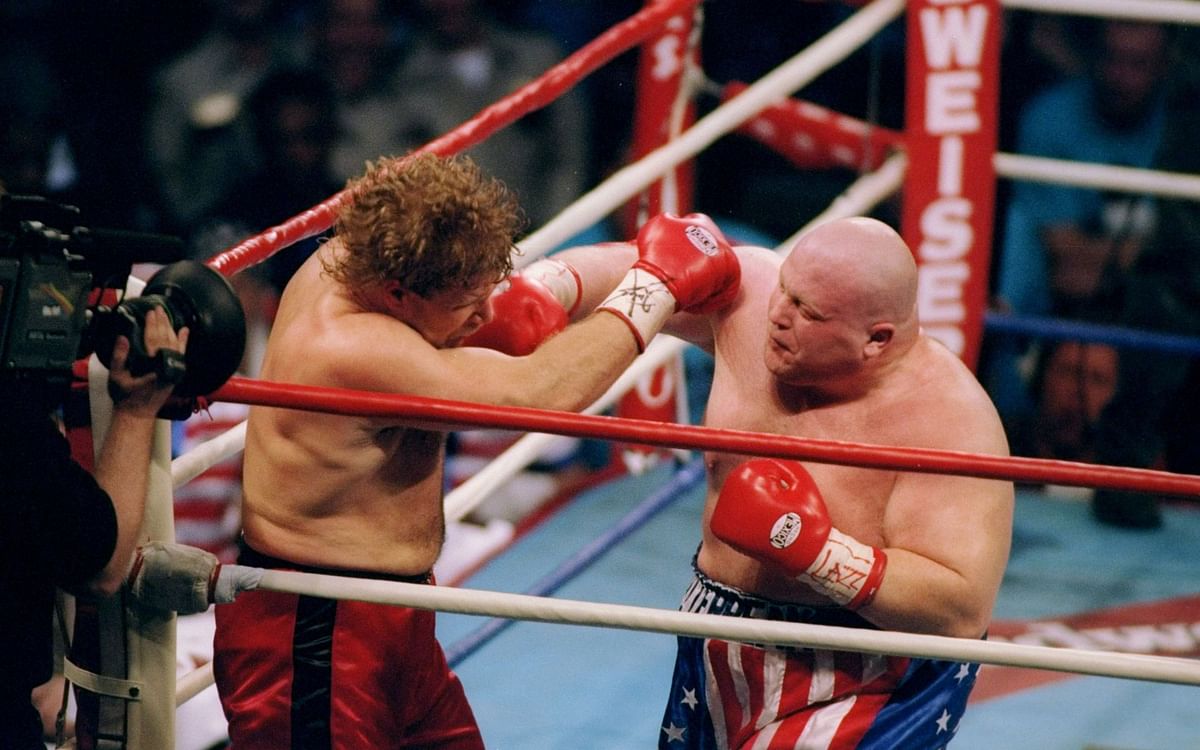Butterbean boxing, named after the iconic figure Eric "Butterbean" Esch, is a unique and fascinating segment of the boxing world that has captivated audiences for decades. Known for his distinct physique and knockout power, Butterbean brought an unorthodox yet entertaining style to the ring, earning him a cult following and a permanent place in boxing history. This article delves into the life and legacy of Butterbean, exploring the man behind the moniker and the sport that made him a household name.
Eric Esch, better known as Butterbean, wasn't your typical boxer. With a physique more akin to a heavyweight, yet a fighting style reminiscent of the bare-knuckle brawlers of old, Butterbean carved out a niche in the boxing world that appealed to fans of all ages. His ability to deliver electrifying knockouts combined with a charismatic personality made him a staple in the sport, crossing over into popular culture through various media appearances.
In this comprehensive exploration of Butterbean boxing, we will examine the life of Eric Esch, his rise to fame, and the impact he had on the sport. We'll also take a closer look at the rules and dynamics of Butterbean's fighting style, his influence on boxing and mixed martial arts, and how he became a symbol of perseverance and determination. Join us as we uncover the story of Butterbean boxing, a phenomenon that continues to inspire and entertain.
Read also:Stay Informed Get The Latest Ryan Paevey News And Updates Now
Table of Contents
- Biography of Eric "Butterbean" Esch
- Early Life and Background
- Rise to Fame in Boxing
- What Makes Butterbean Boxing Unique?
- The Rules of Butterbean Boxing
- Notable Fights and Career Highlights
- Impact on Mixed Martial Arts
- How Has Butterbean Boxing Influenced Pop Culture?
- Training and Preparation
- Legacy and Retirement
- Frequently Asked Questions
- Conclusion
Biography of Eric "Butterbean" Esch
| Full Name | Eric Scott Esch |
|---|---|
| Nickname | Butterbean |
| Birth Date | August 3, 1966 |
| Birth Place | Bay City, Michigan, USA |
| Nationality | American |
| Height | 5 ft 11 in (1.80 m) |
| Weight | 378 lb (171 kg) |
| Professional Debut | October 15, 1994 |
| Retirement | 2005 |
Eric "Butterbean" Esch, born on August 3, 1966, in Bay City, Michigan, is a former professional boxer, kickboxer, and mixed martial artist. Known for his bald head, stocky build, and fierce fighting style, Butterbean became a beloved figure in the world of combat sports. Standing at 5 feet 11 inches and weighing in at 378 pounds during his prime, Esch defied conventional boxing norms and built a career on his unique persona and formidable knockout power.
Butterbean's journey into boxing was unconventional. He began his career in the Toughman Contest, a popular amateur boxing competition, where he quickly gained notoriety for his explosive power and larger-than-life personality. His success in these contests propelled him into the professional boxing scene, where he continued to captivate audiences with his impressive performances and unyielding spirit.
Early Life and Background
Eric Esch grew up in Alabama, where he was raised in a working-class family. His early life was marked by challenges, including financial struggles and the need to support his family from a young age. Despite these obstacles, Esch developed a passion for sports and physical competition, which eventually led him to pursue a career in boxing.
Before stepping into the ring, Esch worked in various jobs, including a stint as a construction worker. His introduction to the Toughman Contest was serendipitous, as he entered the competition on a dare from friends. Little did he know that this decision would set him on a path to becoming one of the most recognizable figures in boxing.
Rise to Fame in Boxing
Butterbean's rise to fame was meteoric. After dominating the Toughman Contest circuit, he made his professional boxing debut on October 15, 1994. His early fights were characterized by quick knockouts and a growing fan base, eager to see the "King of the Four-Rounders" in action. Butterbean developed a niche for himself, primarily fighting in four-round bouts, which showcased his power and stamina.
Throughout his boxing career, Butterbean amassed an impressive record, with numerous victories by knockout. His fighting style was straightforward yet effective, relying on his powerful punches and ability to absorb punishment. Despite facing criticism for his unconventional approach, Butterbean remained a popular figure, drawing large crowds and headlining events across the globe.
Read also:Kevin Olearys Financial Empire A 2024 Insight Into Mr Wonderfuls Wealth
What Makes Butterbean Boxing Unique?
Butterbean boxing is unique for several reasons. Firstly, the man himself, Eric Esch, was unlike any other boxer of his era. His unorthodox physique and fighting style set him apart from traditional heavyweights, making him a fan favorite. Butterbean's ability to connect with audiences, both in and out of the ring, contributed to his enduring appeal.
Another aspect that makes Butterbean boxing stand out is the format of his fights. Often referred to as the "King of the Four-Rounders," Butterbean specialized in shorter bouts, which emphasized his explosive power and quick knockouts. This approach made his fights more accessible and exciting for casual fans, adding to his mass appeal.
Furthermore, Butterbean's charisma and showmanship played a significant role in his popularity. He embraced his persona as a larger-than-life character, often engaging with fans and media in a playful and entertaining manner. This connection with the audience, combined with his impressive performances in the ring, solidified Butterbean's status as a boxing icon.
The Rules of Butterbean Boxing
Butterbean boxing adheres to the standard rules of professional boxing, with a few notable exceptions that catered to Esch's fighting style. His bouts were typically four-round contests, a format that allowed him to maximize his strengths while minimizing the impact of his limited endurance. This structure also played to his advantage, as he was known for delivering quick knockouts.
The rules of Butterbean boxing emphasized entertainment and accessibility, appealing to a broad audience. While traditional boxing matches often extend to 10 or 12 rounds, Butterbean's shorter fights provided a fast-paced and thrilling experience for fans. This approach, combined with his persona and fighting style, made his matches a unique spectacle in the boxing world.
Notable Fights and Career Highlights
Butterbean's career is filled with memorable moments and significant achievements. One of his most famous bouts occurred in 1997 when he faced off against heavyweight contender Larry Holmes. Although Butterbean lost the fight, his performance against a seasoned opponent garnered respect and admiration from fans and critics alike.
Another highlight of Butterbean's career was his victory over Peter McNeeley, a former opponent of Mike Tyson. The fight, which took place in 1999, showcased Butterbean's power and resilience as he secured a decisive win. These and other bouts contributed to his reputation as a formidable force in the boxing world.
Impact on Mixed Martial Arts
Beyond boxing, Butterbean ventured into mixed martial arts (MMA), where he applied his skills and experience in a new arena. His transition to MMA was met with mixed results but demonstrated his versatility as a fighter. Butterbean's participation in MMA events introduced him to a new audience and further cemented his legacy as a combat sports icon.
Butterbean's influence on MMA is evident in his approach to fighting, which emphasized power and entertainment. His presence in the sport highlighted the crossover potential between boxing and MMA, inspiring other fighters to explore multiple disciplines and expand their horizons.
How Has Butterbean Boxing Influenced Pop Culture?
Butterbean boxing has left a lasting impact on popular culture, with Eric Esch becoming a recognizable figure beyond the sports world. His appearances in films, television shows, and video games have introduced him to a wider audience, solidifying his status as a cultural icon.
Butterbean's larger-than-life persona and entertaining fighting style have made him a favorite subject for media portrayals. His influence extends to various forms of entertainment, where he is often depicted as a symbol of determination and resilience. This cultural presence has contributed to the enduring popularity of Butterbean boxing, keeping his legacy alive for future generations.
Training and Preparation
Despite his unconventional physique, Butterbean's success in boxing was no accident. His training regimen focused on enhancing his natural strengths, such as power and endurance, while also addressing his weaknesses. Butterbean's preparation for fights involved intense physical conditioning, strategic planning, and mental fortitude.
Butterbean's training emphasized building explosive power, crucial for achieving quick knockouts in his signature four-round bouts. His workouts often included a mix of weightlifting, cardio exercises, and sparring sessions, tailored to his unique needs as a heavyweight fighter. This dedication to training and preparation played a vital role in his success and longevity in the sport.
Legacy and Retirement
Eric "Butterbean" Esch retired from professional boxing in 2005, leaving behind a legacy that continues to inspire and entertain fans worldwide. His career, characterized by memorable fights and a distinctive persona, left an indelible mark on the sport of boxing. Butterbean's influence extends beyond the ring, as he remains an enduring symbol of perseverance and determination.
In retirement, Butterbean has continued to engage with fans and promote the sport he loves. His involvement in various media projects and public appearances has kept his legacy alive, ensuring that the phenomenon of Butterbean boxing remains a captivating part of boxing history.
Frequently Asked Questions
What is Butterbean's real name?
Butterbean's real name is Eric Scott Esch.
How did Butterbean get his nickname?
Butterbean got his nickname from a diet he was on during his early Toughman Contest days, which consisted mainly of chicken and butterbeans.
When did Butterbean retire from boxing?
Butterbean retired from professional boxing in 2005.
Did Butterbean ever win a world title?
No, Butterbean never won a world title, but he was known for his entertaining fights and knockout power.
Has Butterbean appeared in any films or TV shows?
Yes, Butterbean has appeared in several films and television shows, including "Jackass: The Movie" and WWE programming.
What is Butterbean doing now?
In retirement, Butterbean remains active in promoting boxing and making media appearances, continuing to engage with fans worldwide.
Conclusion
Butterbean boxing, with its unique blend of charisma, power, and entertainment, has left a lasting legacy in the world of combat sports. Eric "Butterbean" Esch's journey from the Toughman Contest to becoming a boxing icon is a testament to his resilience and dedication. His influence extends beyond the ring, impacting both boxing and mixed martial arts, and his presence in popular culture ensures that the phenomenon of Butterbean boxing will continue to captivate audiences for years to come. As we reflect on his career and contributions, Butterbean remains a symbol of the enduring spirit of boxing and a beloved figure in the hearts of fans worldwide.

